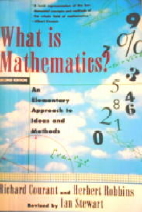Some of George Berkeley’s fame comes from his vehement critique of Newton’s calculus. His criticism was harsh and inspired a number of responses from contemporaries who accepted the vanishing quantities Newton used to formulate his notion of fluxions or, in modern terms, his understanding of instantaneous rates of change. The discussion that followed Berkeley’s 1734 publication (entitled The Analyst; or a Discourse Addressed to an Infidel Mathematician) is worth looking at. An index of publications related to the controversy (including Berkekey’s Analyst can be found here).
It is generally accepted that Berkeley’s criticism actually contributed to mathematics by motivating later work that was devoted to giving rigorous meaning to calculus concepts. These efforts finally culminate in Weierstrass’s arithmetic definition of a limit (discussed in an earlier post). But today I want to look more at Berkeley. I find it interesting that he was willing to systematically dismantle objects into their sensory components, and imagine a world built from ideas, but at the same time was reluctant to reconsider his expectations of mathematics – ideas that can give the senses greater reach.
In Book 1 of his Principia Mathematica Newton makes the following claim:
Quantities, and the ratios of quantities, which in any finite time converge continually to equality, and before the end of that time approach nearer to each other than by any given difference, become ultimately equal.
This is his description of a limit, the fundamental notion that gives calculus meaning. An instantaneous rate of change or fluxion, as Newton called it, is an application of this idea.
And this is what Berkeley had to say about it:
These Expressions indeed are clear and distinct, and the Mind finds no difficulty in conceiving them to be continued beyond any assignable Bounds. But if we remove the Veil and look underneath, if laying aside the Expressions we set ourselves attentively to consider the things themselves, which are supposed to be expressed or marked thereby, we shall discover much Emptiness, Darkness, and Confusion; nay, if I mistake not, direct Impossibilities and Contradictions.
Berkeley was a prominent philosopher, and a religious man who relied heavily on reason. He trusted geometry. With geometry he says:
there is acquired a habit of reasoning, close and exact and methodical: which habit strengthens and sharpens the Mind, and being transferred to other Subjects, is of general use in the inquiry after Truth.
His difficulty with fluxions was mathematical not philosophical. He didn’t trust them. For Berkeley, fluxions overstepped the close and exact method of geometry and analysts like Newton were getting away with it. His disapproval is clear:
Whereas then it is supposed, that you apprehend more distinctly, consider more closely, infer more justly, conclude more accurately than other Men, and that you are therefore less religious because more judicious, I shall claim the privilege of a Free-Thinker; and take the Liberty to inquire into the Object, Principles, and Method of Demonstration admitted by the Mathematicians of the present Age, with the same freedom that you presume to treat the Principles and Mysteries of Religion; to the end, that all Men may see what right you have to lead, or what Encouragement others have to follow you.
He objected to the material-based views of the world (and the determinism they implied) that are often traced back to the success of classical mechanics (a view abandoned by modern physics).
But for Berkeley, science was not the problem. The problem was taking an abstraction too far, to the point where it seemed to contain nothing.
The further the Mind analyseth and pursueth these fugitive Ideas, the more it is lost and bewildered.
Yet his philosophical writing lines up well with some very modern developments in science – like his idea that objects are not actually things in themselves but more bundled sensations. He may have used this observation to justify the existence of God, but it is consistent even with current neurological perspectives. He makes the unexpected argument that the things in our physical experience are not made of material but rather ideas:
By touch I perceive, for example, hard and soft, heat and cold, motion and resistance, and of all these more and less either as to quantity or degree. Smelling furnishes me with odours; the palate with tastes, and hearing conveys sounds to the mind in all their variety of tone and composition. And as several of these are observed to accompany each other, they come to be marked by one name, and so to be reputed as one thing. Thus, for example, a certain colour, taste, smell, figure and consistence having been observed to go together, are accounted one distinct thing, signified by the name apple.
Berkeley’s psychological insights made him something of an idealist. The world comes to be with ideas, visual and tangible ideas, ideas of taste or smell, “imprinted on the senses,” and others formed with the help of memory and imagination. The physical world of objects was mind-dependent. Real objects were distinguished from imaginary or hallucinatory ones only by their regularity. And science investigated that regularity.
Yet the same inquiring mind rejected the mathematics that drove the development of very productive new thoughts. In time, mathematicians came to conclude that mathematical objects were not things in themselves, but existed only in structure and relationship. The deterministic view of the universe, encouraged by the success of calculus, has been completely abandoned. Physicists now see our physical reality as alive with spontaneous, unpredictable quantum activity that can only be understood in interaction. Perhaps it can be said that mathematics has just extended the range of visual and tangible ideas.
From physicist Frank Wilczek in The Lightness of Being:
We try to find mathematical structures that mirror reality so completely that no meaningful aspect escapes them. Solving equations tells us both what exists and how it behaves. By achieving such a correspondence, we put reality in a form we can manipulate with our minds.


Recent Comments